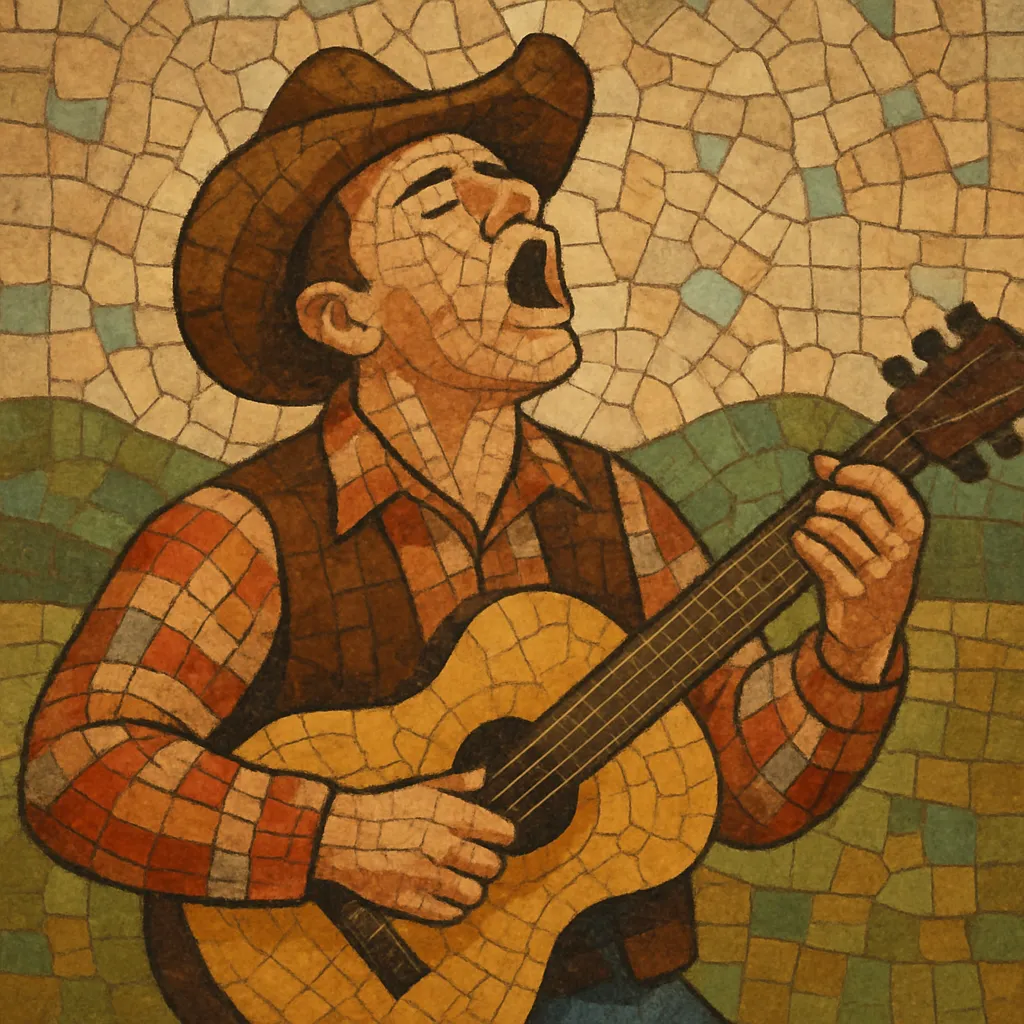
Country yodeling is a vocal-centric branch of early country and western music that spotlights rapid flips between chest voice and head voice to create the unmistakable "yodel" break. It merges the Alpine yodeling technique with American rural song forms, cowboy ballads, and country blues harmonies.
The style is defined by clear, ringing tones, wide interval leaps (often sixths and octaves), and syllabic vocables such as “yo-de-lay-ee-o.” It commonly rides atop acoustic guitar strums, fiddle lines, steel guitar swells, and upright bass, with tempos ranging from lilting waltzes to two-step and medium 4/4. Lyrically, it leans on frontier imagery, open skies, lonesome travel, and romantic yearning, often placing yodeled refrains as hooks or emotional climaxes within otherwise straightforward country forms.
Alpine yodeling traditions arrived in the United States via European immigrants in the 19th century, where the technique gradually blended with Appalachian folk, old-time string-band practices, and the emergent umbrella of “country” music. By the late 1920s, recording technology and radio barn dances helped codify a distinctly American yodel within rural popular music.
Jimmie Rodgers, the “Singing Brakeman,” crystallized country yodeling with his influential “Blue Yodel” series (beginning in 1927). He fused blues progressions and country storytelling with elastic yodel refrains, turning a European technique into a core country vocal device. His records sold widely, and radio exposure spread the sound across the U.S.
As Hollywood popularized the singing cowboy, artists such as Gene Autry, Roy Rogers, Patsy Montana, and Elton Britt brought yodeling to movies, radio, and national stages. Meanwhile, Canadian-born Wilf Carter (Montana Slim) and later Slim Whitman helped internationalize the style. The sound became closely tied to Western imagery, ranch ballads, and danceable two-steps, while retaining blues-tinged harmonies and simple I–IV–V frameworks.
Rock ’n’ roll and the Nashville sound reduced yodeling’s mainstream presence, but the technique persisted in niche country circuits and Western heritage acts. Slim Whitman’s mid-century and later revivals showed yodeling’s crossover appeal, and performers like Rosalie Allen and Kenny Roberts kept the tradition alive on radio and television. Contemporary acts and heritage-minded artists, including Wylie Gustafson, have sustained yodeling as a living practice, using it as a signature color within broader Americana, Western, and roots-country scenes.
Country yodeling cemented the “high lonesome” aesthetic in American roots vocals, influenced singing cowboy and Western music, and left traces in early rockabilly and rock ’n’ roll (notably through artists who began as country yodelers). Today it remains an emblem of frontier romanticism and virtuoso vocal display within country and Western traditions.

